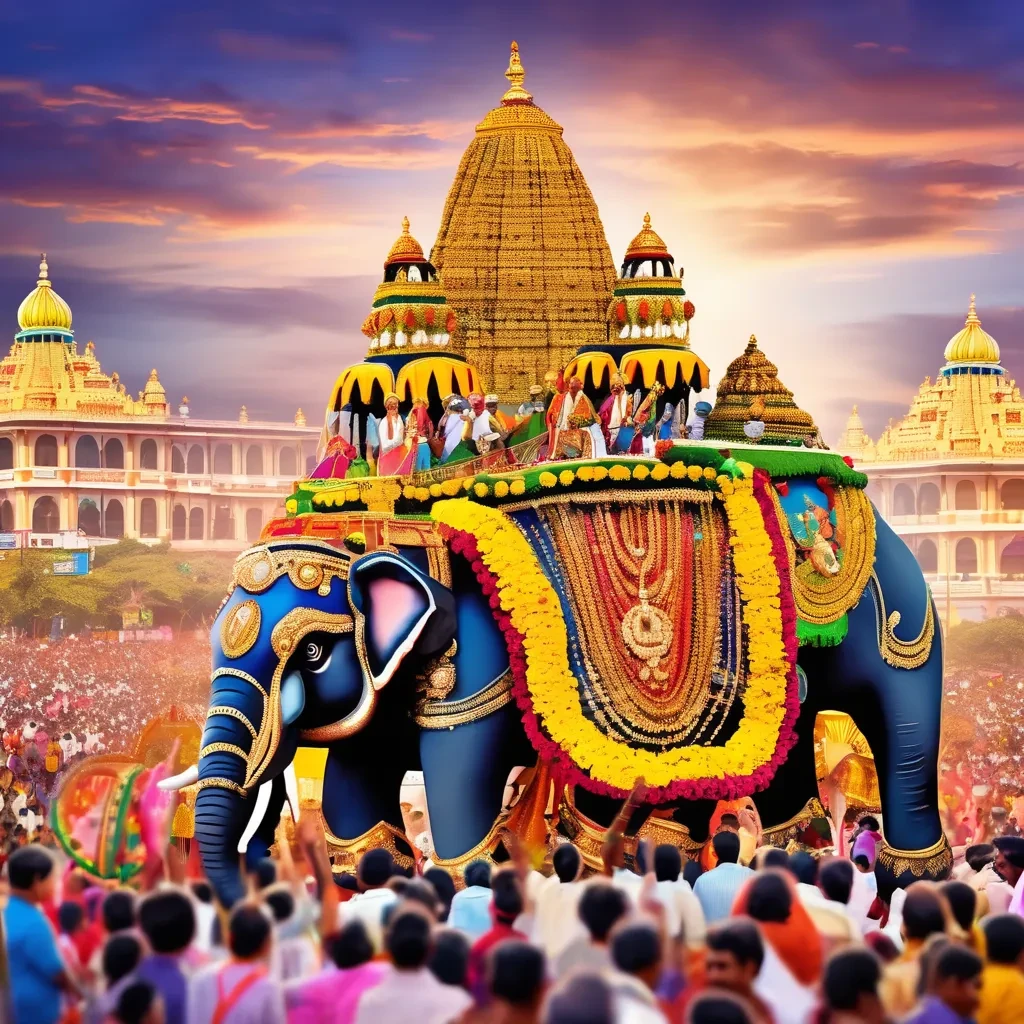The festive season in India is incomplete without the vibrant and grand celebration of Dasara, also known as Vijayadashami. Marking the triumph of good over evil, this festival holds immense significance for Hindus across the world. In 2024, Dasara promises to bring together people from all walks of life to celebrate this annual tradition of joy, culture, and spirituality.
For those eagerly awaiting this celebration, here’s everything you need to know about the Dasara 2024 start and end dates, the significance of the festival, and how it is celebrated across different regions of India.

When is Dasara 2024?
- Dasara 2024 Start Date: Thursday, October 3, 2024
- Dasara 2024 End Date (Vijayadashami): Saturday, October 12, 2024

Dasara typically spans 10 days, starting with the nine-day festival of Navratri, which is dedicated to the worship of Goddess Durga and her nine powerful forms. The celebrations conclude on the tenth day, known as Vijayadashami or Dasara, the day of victory when Lord Rama defeated the demon king Ravana, and Goddess Durga conquered the buffalo demon Mahishasura.
The Significance of Dasara
Dasara holds deep religious and cultural significance. The festival represents the triumph of good over evil, a common theme in Hindu mythology. The two main stories that form the backdrop of this festival are:
- Lord Rama’s Victory Over Ravana: In many parts of India, Dasara commemorates the victory of Lord Rama over the ten-headed demon king Ravana, symbolizing the victory of righteousness (dharma) over evil (adharma). This is celebrated in the form of Ramleela plays and the symbolic burning of Ravana’s effigies on Vijayadashami.
- Durga’s Victory Over Mahishasura: In other regions, particularly in the eastern and northeastern states, Dasara is synonymous with the culmination of Durga Puja, which celebrates Goddess Durga’s victory over the demon Mahishasura. It is believed that Durga fought the demon for nine days and on the tenth day, she achieved victory, bringing peace and order to the world.

Whether celebrated as the defeat of Ravana or Mahishasura, the core essence of Dasara is the celebration of goodness prevailing over evil.
Dasara Celebrations Across India
One of the most fascinating aspects of Dasara is the diversity in how it is celebrated across different states in India. The regional flavors of the festival add to its richness and cultural significance.
1. Mysore Dasara (Karnataka)
Mysore’s Dasara is one of the most famous celebrations in India, often referred to as the “Royal Dasara.” The entire city transforms into a magical kingdom of lights and celebrations. The grand procession on Vijayadashami features a beautifully decorated elephant carrying the idol of Goddess Chamundeshwari, accompanied by music, dance, and cultural displays. Mysore Palace is illuminated with over 100,000 lights every evening during this period, making it a sight to behold.
2. Durga Puja (West Bengal)
In West Bengal, Assam, and Odisha, Dasara coincides with Durga Puja, which marks the last day of this grand festival. The idol immersion (Visarjan) on Vijayadashami is an emotional and cultural event, as huge statues of Goddess Durga are taken in processions to rivers or seas for immersion, symbolizing her return to Mount Kailash. The city of Kolkata, in particular, witnesses an explosion of art, creativity, and celebration during these ten days.
3. Ramleela and Effigy Burning (Northern India)
In Northern India, particularly in Uttar Pradesh, Delhi, and Punjab, Dasara is celebrated through Ramleela, a theatrical re-enactment of the life and times of Lord Rama. This is followed by the dramatic burning of large effigies of Ravana, Meghnath, and Kumbhakarna on the evening of Vijayadashami, symbolizing the end of evil. The atmosphere is electric with firecrackers, lights, and celebrations.
4. Kullu Dussehra (Himachal Pradesh)
In Kullu, Himachal Pradesh, Dasara is celebrated in a week-long fair that starts on Vijayadashami. It is unique because the celebrations here focus on the arrival of deities from various temples in the region. Thousands of devotees gather to witness the grand procession of these deities, and cultural events are held throughout the week.
5. Navratri and Garba (Gujarat)
In Gujarat, Dasara is the final day of Navratri, a festival that involves nine nights of devotion and dance, primarily Garba and Dandiya Raas. People dress in colorful traditional attire and celebrate by dancing in circles to folk songs dedicated to Goddess Durga. The tenth day, Vijayadashami, marks the end of the Navratri festival, and many people begin new ventures on this auspicious day.


Rituals and Traditions During Dasara
Though the mode of celebration differs across the country, some common rituals and practices make Dasara a festival of unity and devotion:
- Ghatasthapana: The beginning of Navratri is marked by Ghatasthapana, where a pot (Kalash) symbolizing Goddess Durga is placed in homes and temples.
- Fasting and Prayer: Devotees often fast during the nine days of Navratri and perform daily prayers to seek the blessings of the goddess.
- Doll Displays: In South India, particularly in Tamil Nadu, Karnataka, and Andhra Pradesh, a tradition known as Bommai Golu (doll arrangement) is observed, where steps are decorated with various dolls and figurines.
- Weapon Worship (Ayudha Puja): On the ninth day (Maha Navami), tools, vehicles, and weapons are worshipped as a way of honoring the instruments that contribute to livelihood.
- Effigy Burning: In many parts of India, especially the North, the burning of effigies of Ravana and his brothers on Vijayadashami symbolizes the destruction of evil.



